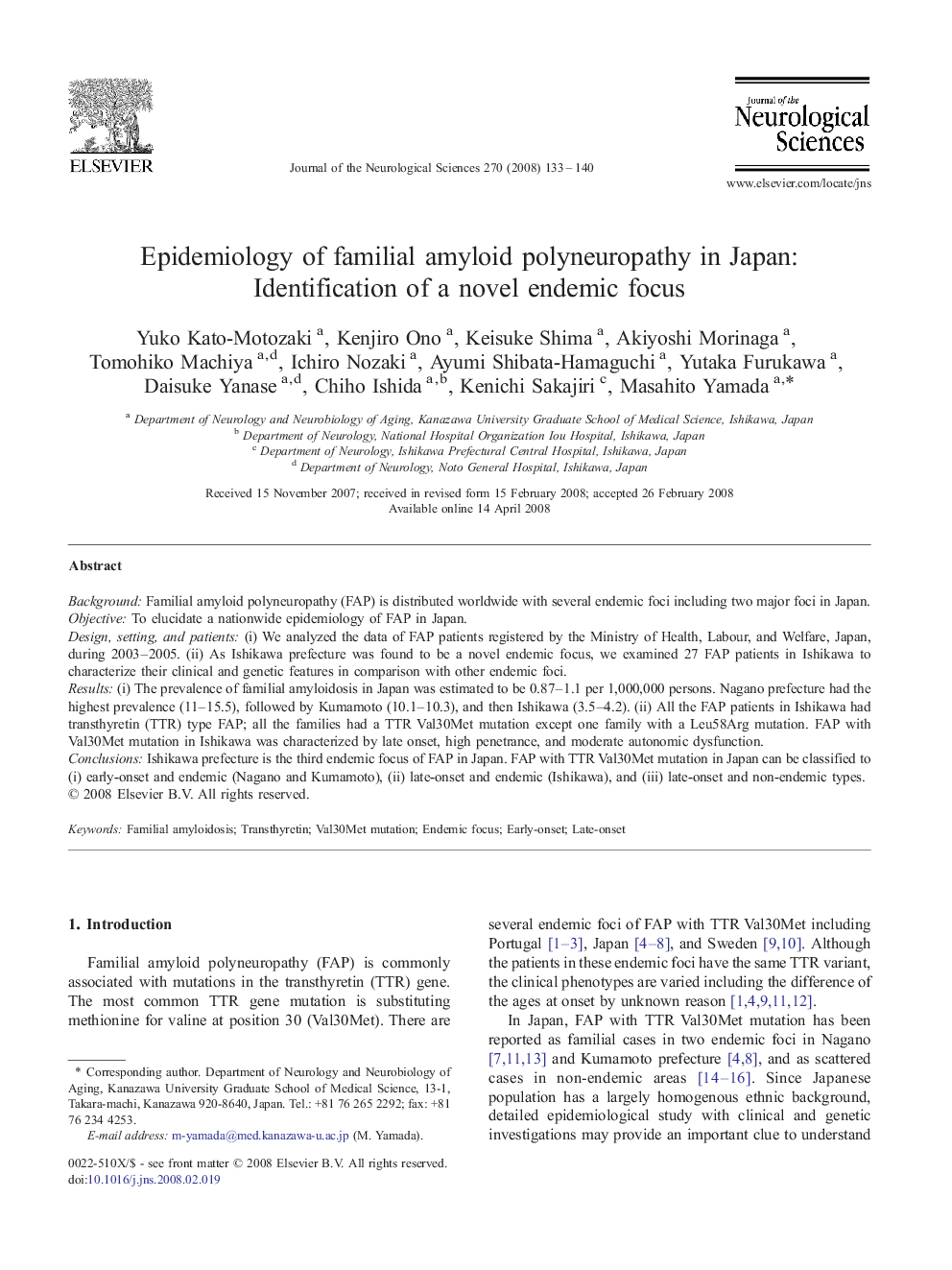| کد مقاله | کد نشریه | سال انتشار | مقاله انگلیسی | نسخه تمام متن |
|---|---|---|---|---|
| 1915665 | 1535192 | 2008 | 8 صفحه PDF | دانلود رایگان |

BackgroundFamilial amyloid polyneuropathy (FAP) is distributed worldwide with several endemic foci including two major foci in Japan.ObjectiveTo elucidate a nationwide epidemiology of FAP in Japan.Design, setting, and patients(i) We analyzed the data of FAP patients registered by the Ministry of Health, Labour, and Welfare, Japan, during 2003–2005. (ii) As Ishikawa prefecture was found to be a novel endemic focus, we examined 27 FAP patients in Ishikawa to characterize their clinical and genetic features in comparison with other endemic foci.Results(i) The prevalence of familial amyloidosis in Japan was estimated to be 0.87–1.1 per 1,000,000 persons. Nagano prefecture had the highest prevalence (11–15.5), followed by Kumamoto (10.1–10.3), and then Ishikawa (3.5–4.2). (ii) All the FAP patients in Ishikawa had transthyretin (TTR) type FAP; all the families had a TTR Val30Met mutation except one family with a Leu58Arg mutation. FAP with Val30Met mutation in Ishikawa was characterized by late onset, high penetrance, and moderate autonomic dysfunction.ConclusionsIshikawa prefecture is the third endemic focus of FAP in Japan. FAP with TTR Val30Met mutation in Japan can be classified to (i) early-onset and endemic (Nagano and Kumamoto), (ii) late-onset and endemic (Ishikawa), and (iii) late-onset and non-endemic types.
Journal: Journal of the Neurological Sciences - Volume 270, Issues 1–2, 15 July 2008, Pages 133–140